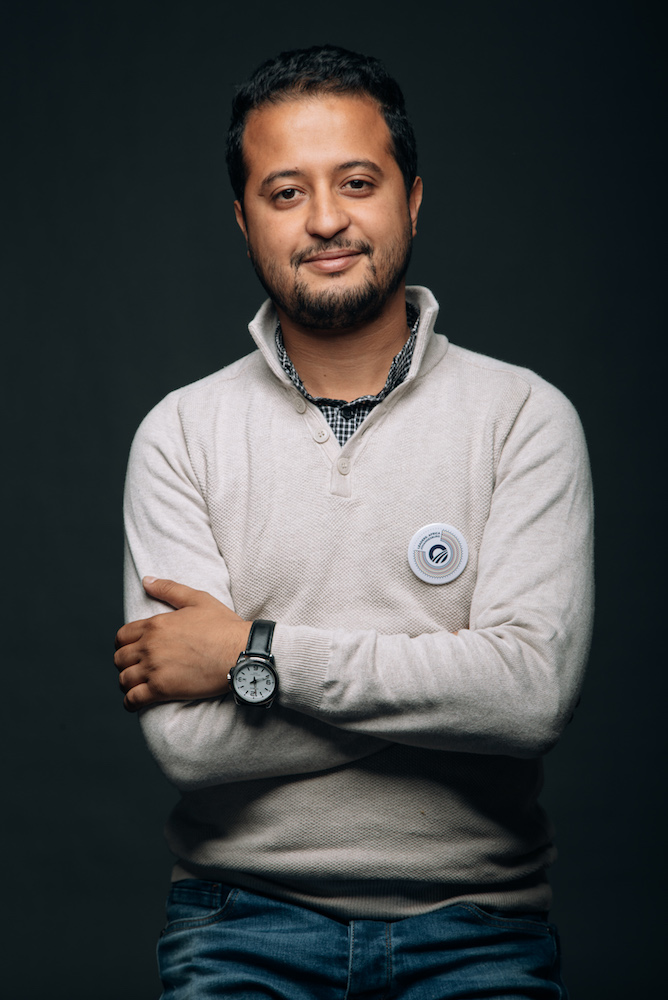TUNIS: Mohamed Dhaouafi began researching prosthetics in 2016 as part of a university project. He swiftly realized there was a lack of readily available and affordable prosthetics, with artificial hands costing up to $50,000.
After finishing his studies, Dhaouafi, 28, ran a startup incubator ZETA HUB at a private university to earn an income while continuing his work on prosthetics. He launched CURE Bionics in late 2018, going full time with his Sousse-based startup in 2019.
Having made multiple prototypes to perfect the design of its prosthetics, the five-strong team decided to launch its products commercially in the first half of 2021.
“We want people using our prosthetics to be satisfied and use it in a practical way — we want our patients to be able to rely on our prosthetics and to guarantee they will last,” said Dhaouafi, CURE’s CEO.
“We’re making some final improvements and will then launch a pilot. If that goes well, we’ll quickly launch in Tunisia before expanding abroad. Tunisia is a tough market, so if we succeed here, we can succeed elsewhere.”
In the developing world, only 5 percent of the 40 million people needing prosthetics have artificial limbs due to the high cost and limited availability. Among those who have received them, nearly 70 percent are dissatisfied and 52 percent reject them, a 2019 University of Nebraska study found.
“People generally feel comfortable wearing a prosthetic, but controlling it is very difficult and complicated. Ours are easy to use since they’re very intuitive,” said Dhaouafi.

Mohamed Dhaouafi, CEO of CURE Bionics. (Supplied)
The lightweight, 3D-printed artificial hands come with different functions depending on the task the patient wants to perform. The brain tells the limbs to move via electric signals transmitted through the nerves, instructing the appropriate muscles to contract or relax.
CURE’s prosthetic hands deploy artificial intelligence (AI) to read these signals via sensors placed on the skin, which means no surgery is necessary to fit them.
“People suffer different traumas in losing their hands. Some were born without hands, so they never experienced what it means to open and close a hand — their muscle signals will be either weak or absent,” said Dhaouafi.
“These differences can be problematic, so the AI algorithm learns and identifies what the muscle signal is about. By using AI, we can reduce the need for doctors and engineers in teaching patients how to use a prosthetic. If they have to intervene with every patient, we cannot scale the product fast. So we made the algorithm smarter.”
CURE’s patients will master the necessary movements through conscious repetition, imprinting them into their subconscious mind so that they can act without thinking — much like how one learns to ride a bike. To help its patients, CURE has developed a virtual reality training program.
“In the virtual environment, they can manipulate the virtual hand like a prosthetic, but in a gamified way to master the exercises while having fun,” Dhaouafi said. “It’s intuitive training. The doctor can provide therapy remotely without the patient having to visit them in person.”
In developing countries, large swathes of the population lack reliable electricity. Consequently, prosthetics users may be unable to recharge the batteries in their artificial limbs, so CURE’s products will come with a solar-powered wireless charger.
“By adding this feature, we can help more people,” said Dhaouafi.
The prosthetic hands come in various predefined sizes, while the socket is fully customizable. They will likely cost between $2,500-3,000, depending on the specific features the patient requests.
Outside Tunisia, CURE will sell its products through third parties that will conduct product measurement, 3D printing, assembly, fitting, and after-sales service.
“That’s the best way for us to scale fast,” Dhaouafi said.
The company is in negotiations with potential partners across Africa, with priority markets including Nigeria, South Africa, Morocco, Egypt, and Angola.
“I visited many of these countries and know people there,” said Dhaouafi, who has participated in non-profit programs in the target markets. “It’s about finding the right partner.”
----------------
* The Middle East Exchange is one of the Mohammed bin Rashid Al-Maktoum Global Initiatives that was launched to reflect the vision of the UAE prime minister and ruler of Dubai in the field of humanitarian and global development, to explore the possibility of changing the status of the Arab region. The initiative offers the press a series of articles on issues affecting Arab societies.
























